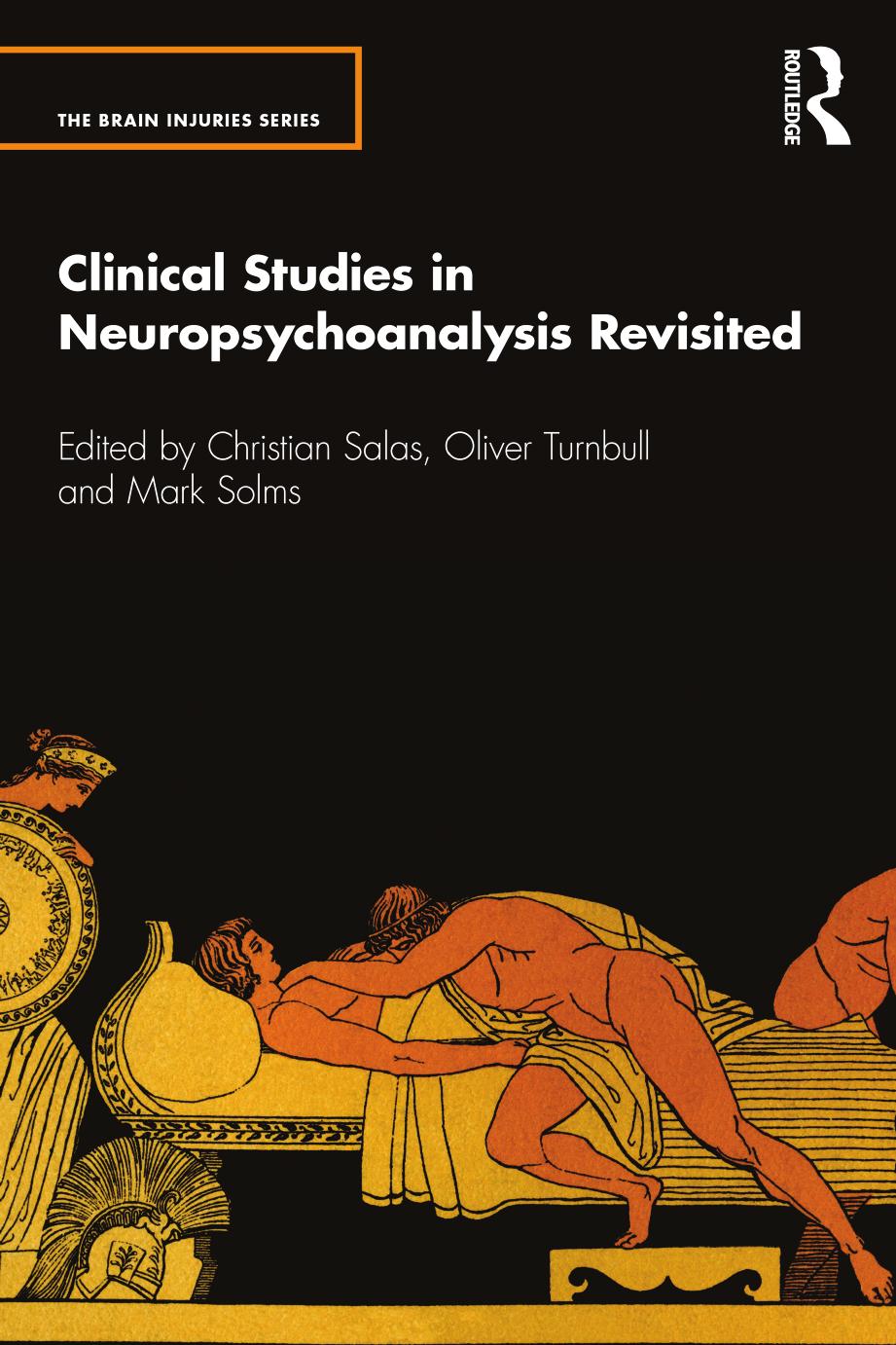Clinical Studies in Neuropsychoanalysis Revisited by Christian Salas & Oliver Turnbull & Mark Solms

Author:Christian Salas & Oliver Turnbull & Mark Solms [Salas, Christian & Turnbull, Oliver & Solms, Mark]
Language: eng
Format: epub, pdf
ISBN: 9781032036939
Google: TnMszgEACAAJ
Publisher: Routledge
Published: 2021-11-15T00:06:50.368523+00:00
1.6 Freudian drive theory
Drive is traditionally described as the demand for work on the body, arising from the relationship between mind and body. Drives usually conceived of as without intrinsic representational content, but can be conceptualised as creating âpressureâ, which is experienced as unpleasure, while drive satisfaction experienced as pleasure (Freudâs pleasure principle; Solms & Zellner, 2012). One way to conceptualise Freudian drive theory is to break it down into distinct elements, as described by Solms and Zellner (2012): source, aim and object. The source gives rise to the drive demand (unpleasure); the aim is the experience of satisfaction when the drive demand is met (pleasure), and the object is that object which has been associated with the aim through learning. Table 8.2 summarises the definition of source, aim and object with the neurobiological correlates. With regard to the current case study, we might reasonably expect that due to dopaminergic deficiency the specific drive element to be affected is the aim.
Table 8.2 Components of Freudian drive theory Component Definition Neurobiological correlates
Source Giving rise to drive: demands on body for work Hypothalamic need detection mechanisms
Aim The experience of satisfaction when the drive demand is met Activation of the mesolimbic dopamine system
Object The object or representation which, through learning, is associated with the aim Cortical encoding and representational processes interacting with sub-cortical areas
From Solms and Zellner (2012).
Download
Clinical Studies in Neuropsychoanalysis Revisited by Christian Salas & Oliver Turnbull & Mark Solms.pdf
This site does not store any files on its server. We only index and link to content provided by other sites. Please contact the content providers to delete copyright contents if any and email us, we'll remove relevant links or contents immediately.
Spare by Prince Harry The Duke of Sussex(5077)
Machine Learning at Scale with H2O by Gregory Keys | David Whiting(4192)
Fairy Tale by Stephen King(3221)
Will by Will Smith(2795)
Hooked: A Dark, Contemporary Romance (Never After Series) by Emily McIntire(2502)
The Bullet Journal Method by Ryder Carroll(2487)
Rationality by Steven Pinker(2291)
Can't Hurt Me: Master Your Mind and Defy the Odds - Clean Edition by David Goggins(2230)
It Starts With Us (It Ends with Us #2) by Colleen Hoover(2203)
Friends, Lovers, and the Big Terrible Thing by Matthew Perry(2125)
The Becoming by Nora Roberts(2091)
Love on the Brain by Ali Hazelwood(1965)
HBR's 10 Must Reads 2022 by Harvard Business Review(1778)
The Strength In Our Scars by Bianca Sparacino(1777)
A Short History of War by Jeremy Black(1764)
Leviathan Falls (The Expanse Book 9) by James S. A. Corey(1651)
515945210 by Unknown(1602)
A Game of Thrones (The Illustrated Edition) by George R. R. Martin(1594)
Bewilderment by Richard Powers(1541)
